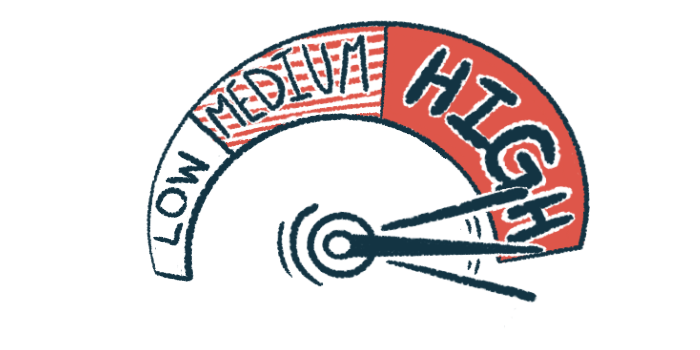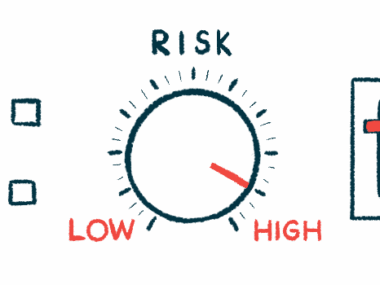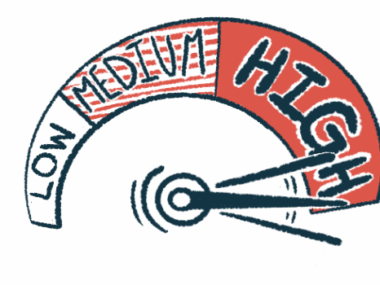Lower glucocorticoid dosing regimen may be risky, study finds
Outcomes worse for patients with kidney damage, those taking rituximab
Written by |

A reduced glucocorticoid dosing regimen for inducing disease remission in people with ANCA-associated vasculitis (AAV) may be associated with a higher risk of poor disease outcomes in those with severe disease, compared with the standard-dose regimen.
That’s according to a real-world study in France and Luxembourg that involved people with severe granulomatosis with polyangiitis (GPA) and microscopic polyangiitis (MPA), the two most common AAV types.
Data showed that patients given the lower-dose regimen were twice more likely to experience kidney failure, relapse, disease progression, or death, whichever came first, after a year. Patients with higher blood creatinine levels, a marker of kidney damage, at the study’s start, and those given rituximab as induction treatment were found to be at particularly high risk of poor outcomes with the reduced-dose regimen.
“We suggest an increased vigilance when using the [reduced glucocorticoid regimen] regimen, especially in [these] two subgroups of patients at higher risk of failure,” the researchers wrote.
The study, “Real-life use of the PEXIVAS reduced-dose glucocorticoid regimen in granulomatosis with polyangiitis and microscopic polyangiitis,” was published in Annals of the Rheumatic Diseases.
Side effects
AAV is a group of autoimmune diseases characterized by inflammation and damage to small blood vessels that is most often associated with the production of self-reactive antibodies, called ANCAs. AAV symptoms depend on the affected organs, which might include the kidneys, lungs, upper respiratory tract, skin, and nervous system.
AAV treatments aim to induce and maintain disease remission, when no symptoms are apparent for a time. These immunosuppressive medications mainly consist of glucocorticoids combined with either cyclophosphamide or rituximab (sold as Rituxan in the U.S., with available biosimilars).
However, glucocorticoids are associated with serious side effects, especially when used at high doses and for long periods, “highlighting the importance of reducing the cumulative dose of [glucocorticoids] whenever possible,” the researchers wrote.
Results from the Phase 3 PEXIVAS clinical trial (NCT00987389) showed that a reduced-dose glucocorticoid regimen was not inferior to a standard dose regimen at reducing the risk of death and kidney failure in people with severe GPA and MPA. The lower-dose regimen was also associated with a lower frequency of serious infections.
But PEXIVAS’s main goals did not include disease progression or relapse among evaluated clinical outcomes, and cyclophosphamide “was the most used induction therapy which is not generalisable to current practice in many centres,” the researchers wrote.
Retrospective analysis
The researchers retrospectively analyzed real-world data from 234 patients with severe GPA or MPA who were given either the reduced-dose or the standard-dose glucocorticoid regimen within their induction treatment. All were treated at any of 19 centers in France or Luxembourg between January 2018 and November 2022.
Patients’ median age was 64, and 51% were men. Sixty percent had GPA, and 40% had MPA. Kidney involvement was present in 70% of patients.
The most common immunosuppressive agent used in induction therapy was rituximab (74%), followed by the glucocorticoid methylprednisolone (72%) and cyclophosphamide (30%).
A total of 126 patients received the reduced-dose glucocorticoid regimen, and 108 received the standard-dose regimen. They were followed for a median of about two years.
The study’s main goal was to assess a composite measure of disease worsening within one year, including minor and major relapses, disease progression before remission, kidney failure requiring dialysis for more than three months and/or kidney transplant, and death, whichever occurred first.
Remission was defined as a score of zero on the Birmingham Vasculitis Activity Score. Major relapses involved a vital organ or affected disease prognosis, while minor relapses affected no vital organs and did not compromise prognosis.
The cumulative glucocorticoid dose was 2,520 g in the reduced-dose regimen group and 4,646 g in the standard-dose group at six months, and 3,360 g in the reduced-dose regimen group and 5,835 g in the standard regimen group at one year.
Results showed that a significantly greater proportion of patients on the reduced-dose regimen met the composite measure of disease progression, compared with those on the standard-dose regimen (33.3% vs. 18.5%).
After adjusting for age, AAV type, relapsing disease, markers of kidney and lung involvement, and other treatments, the lower-dose glucocorticoid regimen was significantly associated with a twofold higher risk of the primary outcome.
The frequency of each component of the primary composite outcome was higher in the reduced-dose group, except for major relapses, although group differences were not statistically significant.
The reduced-dose regimen was not significantly associated with a higher risk of death or kidney failure.
Disease remission was achieved by 96% of patients in the reduced-dose group and 98% of those on a standard-dose glucocorticoid regimen, and there were no significant group differences regarding the number of serious infections.
“It seems that the higher risk of occurrence of the primary outcome was mostly driven by the events of AAV progression before remission,” the researchers wrote. These events were mainly severe, requiring modification of the immunosuppressive therapy (36%) and/or a substantial increase in glucocorticoid dose (40%).
Further analyses in the reduced-dose group showed that patients with creatinine levels higher than 300 micromol/L were three times more likely to see the primary outcome, and those treated with rituximab were twice more likely.







